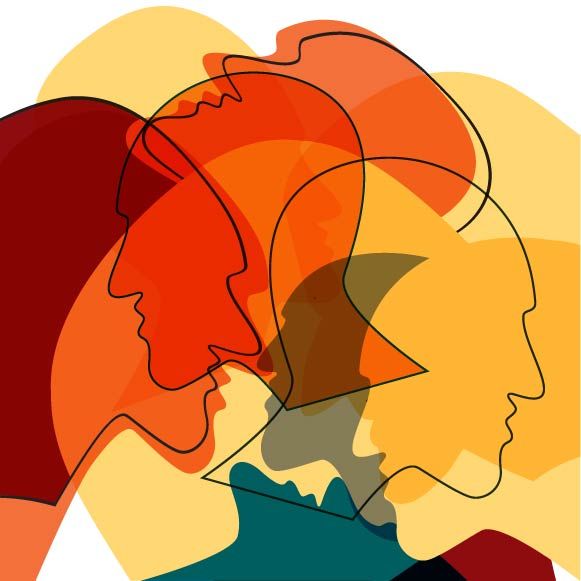Article
Psychagogy: Psychotherapy’s Remarkably Resilient Predecessor
Author(s):
A common misconception about the history of mental illness is that, before Freud and psychoanalysis, there was no such thing as talk therapies or what is commonly known today as psychotherapy.
A common misconception about the history of mental illness is that before Freud and psychoanalysis, there was no such thing as talk therapies or what is commonly known today as psychotherapy. Confinement (eg, cages, chains, and straitjackets), sedation (eg, opium and bromides), and somatic interventions (eg, bindings, purging, and electric stimulation) dominate the imagined landscape of premodern treatments for mental disorders. This picture is not altogether inaccurate-but it is incomplete. In large measure, this prevailing image is why so many today continue to associate the term “madness” with coercion and violence.
Yet the history of madness is replete with examples of noninvasive, noncoercive forms of treatment.1 Music, for instance, was recommended as a treatment for relieving symptoms since ancient times.2 During the 18th and early 19th centuries, Philippe Pinel (1745-1826), William Tuke (1732-1822), Francis Willis (1718-1807), and many others developed and refined the so-called moral treatment, intended as a way of healing lunacy by appealing to a patient’s intellectual and emotional faculties.3,4 And throughout the 19th and early 20th centuries, hypnotism and suggestion were widely used by neurologists, psychiatrists, and healers of different kinds for treating a wide variety of ailments.5
One of the least acknowledged, yet most enduring, forms of psychological treatment was psychagogy. Dating back to ancient Greece and Palestine, psychagogy remained a mainstream therapeutic method and profession until the term largely fell into disuse during the 1970s and 1980s. It remains unclear (to me at least) whether the “disappearance” of the field of psychagogy was a function of its having lost out to competing therapies or whether its methods and ideas were simply appropriated by and folded into other fields. Whatever the case is, however, today the term is likely unfamiliar to all except for those versed in Christian theology.
So what was psychagogy? The term comes from ancient Greek philosophy, in which Plato used it to refer to “the manner of leading the soul through words.”6 He contrasted psychagogy, or “guidance of the soul” toward self-knowledge, with deceptive uses of the art of persuasion (rhetoric). Centuries later, the idea was taken up by Paul of Tarsus and early Christian thinkers, who relied on psychagogic techniques in writing the New Testament.7 And as historian Paul Dilley has recently shown, ancient Christian monks developed a form of ascetic psychagogy, by which disciples were trained in self-improvement through various “stages of advice, discipline, and emotional support.”8
Psychagogy mostly retained its association with techniques aimed at moral self-improvement until the turn of the 20th century. Then, in the 1920s, French and German specialists began to incorporate psychagogic methods in their work with character psychology, psychoanalysis, hypnosis, and general psychotherapeutic practice. In 1924, an International Institute for Psychagogy and Psychotherapy was founded by the Swiss psychoanalyst Charles Baudouin.
A mix of purposes, methods, and clients would come to distinguish psychagogy throughout the rest of the century. Taking on influences from depth psychology, pedagogy, developmental psychology, social psychology, and casework, practitioners utilized a variety of individual and group methods in helping adults and children improve quality of life and better adjust to their social circumstances. Work therapy, directive and nondirective conversation, organized group activities, occupational therapy, conflict resolution, and therapeutic community were used in different measure by psychagogues.9 During the 1950s and 1960s, a professional identity was maintained through conferences and training programs in West Germany. There, psychagogy increasingly drew on the fields of special education, social work, and psychoanalysis to carve out a role working with emotionally disturbed adolescents in both inpatient and outpatient settings.10
Today, the influence of psychagogy is still discernible in pastoral counseling. For the most part, however, it is a term that largely prompts quizzical looks on the faces of those to whom it is mentioned. Too bad, really. Given its remarkable resilience, modern psychagogy warrants the same kind of attention from historians of psychiatry as its ancient counterpart has received from philosophy and religious studies scholars.
References:
References:
1.
Jackson SW.
Care of the Psyche: A History of Psychological Healing.
New Haven, CT: Yale University Press; 1999.
2.
MacKinnon D. Music, madness and the body: symptom and cure.
Hist Psychiatry.
2006;17(65, pt 1):9-21.
3.
Charland LC. Benevolent theory: moral treatment at the York Retreat.
Hist Psychiatry.
2007;18:61-80.
4.
Weiner DB. Alienists, treatises, and the psychologic approach in the era of Pinel. In: Wallace ER IV, Gach J, eds.
History of Psychiatry and Medical Psychology.
New York: Springer Science + Business Media; 2008:281-303.
5.
Gauld A.
A History of Hypnotism.
New York: Cambridge University Press; 1992.
6.
Glad CE.
Paul and Philodemus: Adaptability in Epicurean and Early Christian Psychagogy. Supplements to Novum Testamentum.
Leiden, the Netherlands: EJ Brill; 1995:17.
7.
Sterling G. Hellenistic moral philosophy and the New Testament. In: Porter SE, ed.
Dictionary of Biblical Criticism and Interpretation.
New York: Routledge; 2007:153.
8.
Dilley P.
Care of the Other in Ancient Monasticism: A Cultural History of Ascetic Guidance
[dissertation]. New Haven, CT: Yale University; 2008.
9.
Schraml W. Die psychagogischen Methoden.
Z Klin Psychol Psychother.
1958;6:304-312.
10.
Knöll H. Psychagogik-Gedanken zur Begriffsbestimmung.
Prax Kinderpsychol Kinderpsychiatr.
1968;17:155-157.






